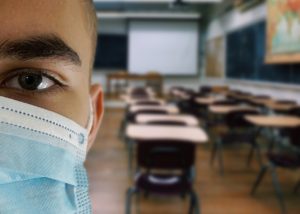
“Face-to-face learning is so vital for our students, especially our youngest learners. We’ve been diligently working to maximize in-person learning for the remainder of the school year,” Superintendent Dr. Christina Kishimoto said.
Union leaders from the Hawaii Government Employees Association (HGEA), Hawaii State Teachers Association (HSTA), and the United Public Workers (UPW) are aware of the Department’s plans to ramp up in person instruction and are supportive of these efforts.
“This will ensure our dedicated teams working in our schools are supported and continue to feel safe as we make this transition,” Kishimoto added. “Mahalo to Gov. David Ige, Lt. Gov. Josh Green, U.S. Sen. Brian Schatz, House Speaker Scott Saiki and our union leaders for supporting me in prioritizing the best interests of our students.”
The HIDOE employs teachers, librarians, counselors and registrars represented by HSTA; educational officers, educational assistants, office assistants, school security attendants, school health assistants, school food service managers, occupational/physical therapists and school psychologists represented by HGEA; and blue collar school custodians, building maintenance workers, school bakers, school cooks and cafeteria helpers represented by UPW.
Highlights of health and safety protocols for the ramp-up of in-person instruction include:
- Advance notice: Schools shall provide a minimum notice of seven calendar days before an increase to in-person schooling.
- Remote work during quarantine: In the event of a classroom, workspace and/or building being closed due to COVID-19 and students being sent home and/or being directed to quarantine, employees identified as a close contact needing to quarantine in accordance with Centers for Disease Control and Prevention (CDC)/Department of Health (DOH) school guidance shall continue to work from a remote location when able.
- Mitigation strategies: Regardless of the level of community transmission, all schools shall use and layer mitigation strategies aligned to CDC guidance, DOH guidelines, and the HIDOE’s Return to Learn Health and Safety Handbook. These strategies include:
-
- Core essential strategies to be implemented in every situation: Consistent masking; staying home when unwell and going home if you become unwell at school; and proper hand hygiene.
- Mitigation strategies to be applied in combination to the greatest extent possible: Cohorting; physical distancing (ideally, at least 6 feet); adjusting ventilation systems to introduce additional outside air and/or increase air exchange; physical barriers (most important when masking and physical distancing cannot be maintained); and cleaning high-touch areas.